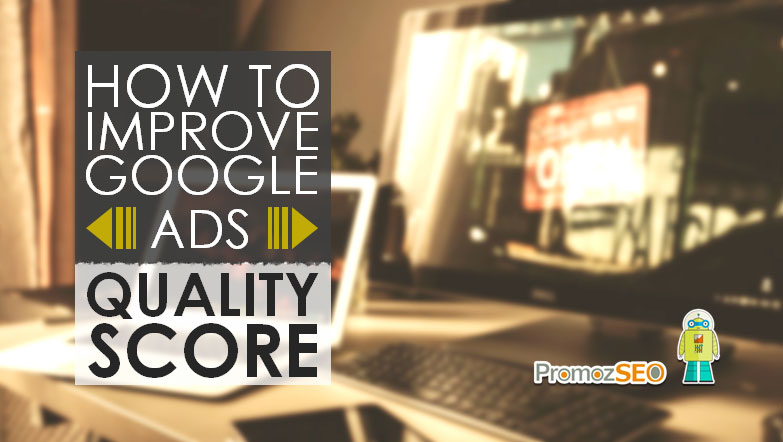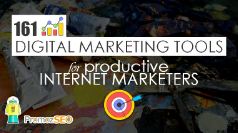How to Improve Google Ads Quality Score, and Increase Traffic and Sales Conversion Rate

Google has come a long way from just showing you search results for your queries. It has now evolved into an intelligent, super intuitive machine. It can help you boost your business from nothing to new heights of success by allowing it better rankings through your website’s SEO and PPC (Pay Per Click) campaigns.
If your site has relevant content that your online visitors and buyers are looking for, then rest assured that Google will take notice and help you along to fare better in the digital market.
But how does Google do this?
There are two ways; SEO and Google Ads (or PPC).
Here in this post, we are going to concentrate on Google Ads, and more precisely on the Quality Score.
What is Quality Score?
Well, let me explain.
If you run Pay Per Click ad campaigns on Google, then Google assigns the Quality Score to your ads. It is a metric that is used to measure the quality, relevance, and performance of your ads and content.
The Quality Score is responsible for mainly two things:
- The rankings of your PPC ads. Higher the Quality Score confirms higher the rankings of your Google Ads.
- The Cost Per Click of your ads. Higher the Quality Score generally means the less money you have to pay per click.
Google uses the Quality Score to determine the effectiveness of your PPC ads and landing pages among the vast numbers of competitive websites bidding for the same or similar keywords.
But again, the question arises on how Google sets the Quality Score?
The main three factors that Google monitors to determine the Quality Score are:
- Click Through Rate (CTR) – If more number of users click on your ad and visit your landing page, your ad CTR increases. If the users visiting your landing page get satisfied with what you offer and stay there for a longer time, then the landing page bounce rate will decrease. Google counts these two metrics as two important parameters to measure the degree of user engagement. When your landing page CTR increases and the bounce rate decreases, Google considers that the visitors are getting what they want from your website, and eventually bumps up the Quality Score.
- Ad relevance – If the content of your landing page is relevant to the keywords you targeted and the query of the user, then Google will consider the landing page to be relevant and thus useful, and will finally increase the Quality Score.
- Landing page experience – When a user’s query matches the ad, the user will click on it and visit your ad’s landing page. If the user converts, then Google will consider your landing page as relevant and successful, and in turn, will increase the Quality Score.
So basically, Google controls the Quality Score based on the level of users’ satisfaction and engagement with the landing page. If Google finds that the user is happy with your website’s ad, i.e., the landing page delivers what it promises, then the Quality Score will go up. And as a result, Google will grant your website all the perks that come with it like higher paid rankings and elevated traffic at relatively lower CPC.
Now that you know what Quality Score is, its determining factors, and how it impacts your business, let’s focus on the various techniques to increase the Quality Score and reap all the benefits.
Do A Thorough Keyword Research
Keywords are essential when it comes to driving traffic to your website, be it SEO or Google Ads.
If you have the keywords in your content that your consumer base is searching for, then Google will consider your content relevant and drive traffic accordingly.
Knowing your consumer base, what they are looking for, and what will solve their problems are important. And to know that you have to do a comprehensive keyword research.
Keywords with high search volume are the indicators of what users want the most, and if you can use those keywords in your ads and your landing page content, your CTR and traffic will increase considerably. And we know, higher CTR means high Quality Score.
But a broad sense of keyword generally doesn’t work in this case. You need to be specific with the keywords you use while not severely limiting the search volume.
You don’t need broad match keywords that may drive tons of traffic to your landing page, but for not being completely relevant with your content will increase the bounce rate and eventually decrease the Quality Score. Or, you do not want keywords that though being an exact match to your landing page content, are not searched a lot, thus retrenching your traffic.
So, what you need is perfect combinations of keyword phrases that, if not exactly, but competently explain the intent of your landing page content and what users should expect from your ad.
Remember, Google counts the keywords’ relevance. So, tailor your PPC ads specifically and bid for keywords that are more relevant to your landing page and have the potential to bring in a decent amount of traffic.
Besides, include a few negative keywords prudently in your PPC ad campaign, which will prevent your ad from being shown for searches containing the negative keywords you selected. For example, in case you want to sell only the expensive laptops, you may consider adding “budget” and “cheap” as negative keywords. So when someone searches with “budget laptops to buy” or “cheap laptop prices”, your ad won’t appear.
Selecting the right key phrases along with a few negative keywords can significantly decrease irrelevant traffic to your landing page, thus reduce the bounce rate and improve the Quality Score.
Group Keywords for Targeted Ad Groups
After you are done researching the keywords, now you have to use them in your ad groups.
Relevant keywords can do wonders for your PPC ads. But does it work if you use all of them in one ad group without any rhyme or reason?
Of course, not.
You cannot just throw all your keywords together in one ad group and hope for the best. You have to know which keywords work best with what and group them accordingly to target a specific consumer base.
Break up your list of keywords into small logical groups or themes like specific services, products, locations, brands, etc. This will keep your ad groups relevant and focused.
For example, if you have an online bakery business, then you will sell: theme cakes, wedding cakes, birthday cakes, pastries, etc., and accordingly, you have to segment and group your keywords together.
So for your “wedding cake” PPC ad, you should group in all the keywords that are relevant to the wedding cake. Similarly, for your “birthday cake” ad, you must segment your keywords relevant to the birthday cake.
Further, if you want to sell your cakes in different locations, you should tie up the same location keywords together to get the best results. This way, you will have grouped your keywords to offer a specific product and service while also utilizing local keywords to their highest potential.
By adjusting your keyword grouping, you can improve the CTR, and eventually, the Quality Score. So, run a detailed keyword diagnosis to find out which keywords can be removed from your ad group and which relevant keywords can be grouped in together, which can bring in traffic to your landing page.
Write High Quality Ad Copy
A well-written ad copy will be able to draw in more visitors than a slapdash one. A high-quality ad will focus on one distinct item that will drive in relevant traffic you want, which will not only increase the CTR and Quality Score but also boost the sales conversion rate.
Take the bakery example from the previous point. If your ad copy is very generic and does not pinpoint the type of cake you want to sell, it won’t draw in any specific group of consumers who are looking for a particular item type like a wedding cake or a birthday cake. But, when your PPC ad copy talks about one thing in particular, it will draw exactly the type of consumers you are targeting.
Remember, PPC ads that are offering a broad sense of product and not something specific are generally not that effective. Potential buyers must intuit that they are truly getting what they actually want and need from your ad.
When the ad copy talks about multiple services or products, ultimately, it will fail to bring in traffic. Consumers will get confused by your PPC ad and will go somewhere else that matches explicitly with what they want.
So remember that a targeted and well-written copy makes more impact than general and vague ad copies, and thus will increase the Quality Score.
Optimize Your Landing Page
Kudos to you. You have done a commendable job so far, starting from doing extensive keyword research, grouping them together, to writing a high-quality ad copy. So, now you are happy that your work is done; you can sit back and watch the traffic come to your website in droves and increase your sales and bottom line dramatically.
But wait. Are you missing something?
Yes, you are forgetting that only selecting the right keywords, segmenting them logically, writing up the best ad copy, and finally, increasing the CTR are not enough to improve the Quality Score. You should also have a lower bounce rate and an improved conversion rate before Google attaches a high Quality Score.
After arriving on your landing page, if your paid visitors do not get what your ad described, they will exit without a conversion. This, in turn, negates all your efforts in creating an optimized, well-tailored PPC ad campaign in the first place.
To rectify this, along with your ad campaign, you have to work on your landing page optimization as well, so that consumers get what your ad promised to them.
Your landing page should be designed beautifully and must have content that uses targeted keywords you selected and segmented for the relevant ad group. Creating a separate landing page for each ad group may sound a bit daunting, but it is the best strategy that will get you more sales conversions.
Next, take care of your landing page Call to Action optimization. Landing page CTA must be used in a visible portion of the page, preferably at above the fold of your site. For a relatively long landing page, repeat the CTA a few times to entice visitors to click them. Additionally, optimize the CTA text and color to boost the conversion rate.
If prospective buyers read your ads, click on them, and land on a page that meets their expectations, then they are more likely to convert into paying customers. This, in turn, improves the overall user engagement, increases the Quality Score, and boosts the bottom line of your business.
However, besides the keywords, content, design, and CTA optimization, you must also make sure that the page loads very fast on browsers and mobile devices. Or else, even after doing everything correctly, you will experience a very high bounce rate, a low Quality Score, and a severe nosedive in PPC traffic.
Summing Up
So what have you done so far to improve your PPC Quality Score? Do you want a quick recap?
- You have done detailed keyword research focusing on the product or service you want to sell from the ad.
- You have grouped in the right keywords together in the ad group and filtered the irrelevant keywords out.
- You have written a persuasive ad copy with the targeted keywords in place.
- You have optimized the landing page content with the keywords you selected and used in your ad group and ad copy.
Now, if you meticulously follow and implement these tips to improve your Google Ads Quality Score, it will not only increase the targeted traffic to your landing page but will also convert a large percentage of that into loyal customers.
Now it’s your turn.
Do you run Google Ads? How do you improve the Quality Score?
Do you apply anything that is not mentioned here? Can you please tell us about that?
We would like to hear from you and learn your techniques for boosting the Quality Score.
An advanced All-in-One Digital Marketing Course.
Mentored by Mr. Soumya Roy, the Founder, CEO of PromozSEO Web Marketing Academy.
- Reasons Your Business Needs to be on Instagram - September 16, 2021
- 7 Reasons Your Business Should Invest in Professional Content Creation - August 12, 2021
- 5 Ways You Can Improve Your Website’s Existing Backlinks - April 30, 2021





